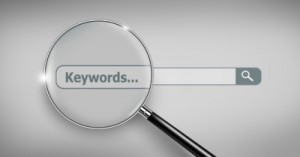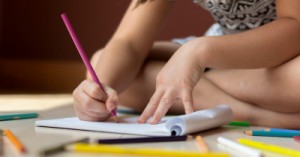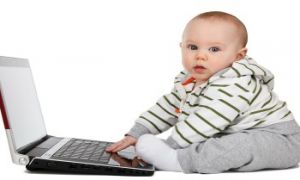Reflection is a valuable tool for personal growth and learning; critical reflection takes it a step further by promoting deeper analysis and transformative change. The following article provides information on What Is Reflection, What Is Critical Reflection, Differences Between Reflection and Critical Reflection, When To Use Reflections, When To Use Critical Reflections, Sharing Reflections and Critical Reflections With Families, Linking To The EYLF and more.
What Is Reflection
Reflection is the process of looking back on past experiences, actions, and events to understand and learn from them. It's often a personal and introspective activity. Key characteristics of reflection include:
-
Descriptive: Focuses on describing what happened.
-
Self-Awareness: Increases awareness of one's own thoughts, feelings, and actions.
-
Learning: Aims to learn from past experiences to improve future actions.
Example: After completing a project, you might reflect on what went well, what challenges you faced, and what you could do differently next time.
What Is Critical Reflection?
Critical reflection goes beyond basic reflection by incorporating a deeper level of analysis and evaluation. It involves questioning underlying assumptions, exploring different perspectives, and considering the broader context. Key characteristics of critical reflection include:
-
Analytical: Involves critical thinking and questioning.
-
Evaluative: Assesses the effectiveness and impact of actions and decisions.
-
Contextual: Considers the broader social, cultural, and political context.
-
Transformative: Aims to bring about change and improvement based on insights gained.
Example: In addition to reflecting on the success of a project, you might critically reflect on how your assumptions and biases influenced the outcome, how different perspectives could have impacted the project, and what systemic changes could be made to improve future projects.
Differences Between Reflection and Critical Reflection
Reflection and critical reflection are both important processes for learning and growth, but they differ in depth and focus. Here’s a breakdown of the differences:
Reflection
-
Purpose: To understand and learn from past experiences.
-
Focus: Descriptive, focusing on what happened.
-
Approach: Personal and introspective.
-
Outcome: Increased self-awareness and personal growth.
-
Example: Reflecting on a lesson you taught to identify what went well and what could be improved.
Critical Reflection
-
Purpose: To analyze and evaluate experiences to understand underlying assumptions, biases, and broader implications.
-
Focus: Analytical, questioning the reasons behind actions and their impact.
-
Approach: Evaluative and contextual, considering social, cultural, and political factors.
-
Outcome: Transformative change and deeper understanding.
-
Example: Critically reflecting on how your teaching practices might be influenced by societal norms and considering alternative approaches to create a more inclusive learning environment.
In essence, reflection helps you understand your experiences, while critical reflection digs deeper, challenging assumptions and exploring the broader context to foster significant change and improvement.
When To Use Reflections In Early Childhood Learning
Reflection in early childhood learning is a powerful tool that can be used in various contexts to enhance both teaching practices and children's learning experiences. Here are some key moments when reflection is particularly valuable:
After a Lesson or Activity
-
Evaluate Effectiveness: Reflect on how well the lesson or activity met its objectives. Consider what worked well and what could be improved for future sessions.
During Planning
-
Informed Decision-Making: Use reflection to inform your planning process. Consider past experiences and insights to create more effective and engaging lesson plans.
When Addressing Challenges
-
Problem-Solving: Reflect on any challenges or issues that arise in the classroom. Identify underlying causes and potential solutions to improve the learning environment.
For Professional Development
-
Growth and Learning: Reflect on your own teaching practices and professional growth. Identify areas for improvement and set goals for further development.
Observing Children's Behavior and Development
-
Understanding Individual Needs: Reflect on observations of children's behavior and development. Use these insights to tailor your teaching strategies to meet individual needs.
Communicating with Families
-
Building Relationships: Reflect on your interactions with families and consider how to strengthen communication and partnerships. This can lead to better support for children's learning and development.
Implementing New Strategies or Approaches
-
Continuous Improvement: After trying new teaching strategies or approaches, reflect on their impact. Determine what adjustments might be needed to enhance their effectiveness.
By incorporating reflection into these moments, you can create a more thoughtful, responsive, and effective learning environment for young children.
When To Use Critical Reflection In Early Childhood Learning
Addressing Bias and Assumptions
-
Cultural Competency: Reflect critically on your own cultural assumptions and biases that may affect your teaching practices. Consider how these can be addressed to create a more inclusive and equitable learning environment.
After Observing Behavior and Development
-
Deeper Understanding: Analyze the reasons behind children's behaviors and developmental milestones. Consider how different factors (such as environment, family background, and social interactions) influence their development.
During Curriculum Planning and Implementation
-
Evaluating Impact: Reflect on how your curriculum choices impact children's learning and development. Consider whether your approaches are promoting or hindering their growth and how you can make necessary adjustments.
When Engaging with Families and the Community
-
Building Relationships: Reflect on your interactions with families and community members. Consider how power dynamics, communication styles, and cultural differences may affect these relationships and what steps you can take to improve them.
Addressing Challenges and Conflicts
-
Problem-Solving: Critically reflect on conflicts or challenges that arise in the classroom. Analyze the underlying causes and consider multiple perspectives to develop effective solutions.
Implementing New Policies or Practices
-
Change and Adaptation: Reflect on the implementation of new policies or practices. Consider their impact on children, families, and staff, and whether they are achieving the intended outcomes.
Professional Development
-
Growth and Improvement: Use critical reflection to evaluate your professional development goals and achievements. Consider what strategies have been effective and what areas require further development.
Ethical Considerations
-
Ethical Practice: Reflect on ethical dilemmas or decisions. Analyze the implications of your actions and consider how to uphold ethical standards in your practice.
By integrating critical reflection into these moments, you can gain deeper insights, challenge assumptions, and make informed decisions that enhance your teaching practices and support children's learning and development.
Sharing Reflections and Critical Reflections With Families
Sharing reflections and critical reflections with families is a powerful way to build partnerships and support children's development. Here are some strategies to effectively communicate these insights:
Reflective Practices
- Regular Updates: Provide families with regular updates on their child's progress and experiences. This could be through newsletters, emails, or a communication app.
- Parent-Teacher Meetings: Schedule regular parent-teacher meetings to discuss observations and reflections on their child's learning and development. Share specific examples and highlight areas of growth.
- Learning Portfolios: Create learning portfolios for each child that include reflective notes, photos, and examples of their work. This provides a comprehensive view of their learning journey.
Critical Reflection Practices
- Contextual Information: When sharing critical reflections, provide context about the broader social, cultural, or environmental factors that influence the learning environment. This helps families understand the bigger picture.
- Collaborative Problem-Solving: Engage families in discussions about challenges and areas for improvement. Seek their input and collaborate on strategies to support their child's development.
- Cultural Sensitivity: Be mindful of cultural differences and respect diverse perspectives when sharing critical reflections. Ensure that families feel heard and valued.
Tools for Communication
- Digital Platforms: Use digital platforms like communication apps or websites to share reflections and critical reflections in real-time. This ensures that families have easy access to information.
- Visual Aids: Use photos, videos, and charts to illustrate reflections and critical reflections. Visual aids can make the information more engaging and easier to understand.
- Feedback Mechanisms: Provide opportunities for families to share their own reflections and feedback. This can be through surveys, suggestion boxes, or open-ended questions.
By effectively sharing reflections and critical reflections with families, you can foster a collaborative and supportive environment that enhances children's learning and development.
Linking Reflections To The EYLF
Linking reflections to the Early Years Learning Framework (EYLF) can enhance both teaching practices and children's learning experiences. Here's how you can connect reflections to the EYLF outcomes:
Outcome 1: Children Have a Strong Sense of Identity
-
Reflect on Identity Development: Consider how activities and interactions support children's emerging identities. Reflect on how children express their individuality and cultural heritage.
-
Family Engagement: Involve families in reflections to understand their child's sense of identity and how it can be nurtured at home and in the early learning environment.
Outcome 2: Children Are Connected with and Contribute to Their World
-
Community Connections: Reflect on how children engage with their local community and environment. Consider ways to enhance their sense of belonging and responsibility towards their community.
-
Sustainability Practices: Reflect on how sustainability activities help children understand their role in caring for the environment and contributing to a sustainable future.
Outcome 3: Children Have a Strong Sense of Wellbeing
-
Emotional Wellbeing: Reflect on how children's emotional needs are being met. Consider strategies to support their social and emotional development.
-
Physical Health: Reflect on activities that promote physical health and wellbeing. Ensure that children have opportunities for active play and healthy habits.
Outcome 4: Children Are Confident and Involved Learners
-
Learning Dispositions: Reflect on how children develop dispositions such as curiosity, persistence, and creativity. Consider how to foster these qualities through your teaching practices.
-
Engagement in Learning: Reflect on how children are engaged in learning activities. Consider ways to make learning more interactive and meaningful.
Outcome 5: Children Are Effective Communicators
-
Communication Skills: Reflect on how children develop their communication skills. Consider how to support their language development and encourage effective communication.
-
Expressive Arts: Reflect on how children use expressive arts to communicate their ideas and feelings. Consider ways to integrate arts into daily activities.
By linking reflections to the EYLF outcomes, you can create a more holistic and reflective approach to early childhood education. This helps ensure that children's learning experiences are meaningful, supportive, and aligned with the framework's principles.
Linking Critical Reflections To The EYLF
- Critical Reflection: Analyze how your activities support or hinder children’s sense of identity. Are there biases or cultural assumptions influencing how you recognize and celebrate each child’s uniqueness? Consider how inclusive your practices are and whether all children feel valued and respected.
- Critical Reflection: Evaluate how your learning environment and activities promote connections with the community and the natural world. Reflect on the societal and cultural contexts influencing children’s understanding of their role in the community. Are there opportunities for children to engage in community projects or environmental sustainability activities?
- Critical Reflection: Examine the factors affecting children’s wellbeing, including physical, emotional, and social aspects. Consider how your practices support children’s resilience and coping skills. Reflect on the inclusivity of your environment and whether it promotes a sense of safety and belonging for all children.
- Critical Reflection: Assess how your teaching strategies encourage critical thinking, curiosity, and problem-solving. Reflect on whether your learning experiences are child-centered and adaptive to individual needs. Consider how cultural, social, and economic factors influence children’s access to learning opportunities.
- Critical Reflection: Analyze how your practices support the development of children’s communication skills. Reflect on the diversity of communication styles and languages in your setting. Consider how your environment fosters expressive and receptive communication and whether it is inclusive of all children’s linguistic and cultural backgrounds.







 Here is the list of the EYLF Learning Outcomes that you can use as a guide or reference for your documentation and planning. The EYLF
Here is the list of the EYLF Learning Outcomes that you can use as a guide or reference for your documentation and planning. The EYLF The EYLF is a guide which consists of Principles, Practices and 5 main Learning Outcomes along with each of their sub outcomes, based on identity,
The EYLF is a guide which consists of Principles, Practices and 5 main Learning Outcomes along with each of their sub outcomes, based on identity, This is a guide on How to Write a Learning Story. It provides information on What Is A Learning Story, Writing A Learning Story, Sample
This is a guide on How to Write a Learning Story. It provides information on What Is A Learning Story, Writing A Learning Story, Sample One of the most important types of documentation methods that educators needs to be familiar with are “observations”. Observations are crucial for all early childhood
One of the most important types of documentation methods that educators needs to be familiar with are “observations”. Observations are crucial for all early childhood To support children achieve learning outcomes from the EYLF Framework, the following list gives educators examples of how to promote children's learning in each individual
To support children achieve learning outcomes from the EYLF Framework, the following list gives educators examples of how to promote children's learning in each individual Reflective practice is learning from everyday situations and issues and concerns that arise which form part of our daily routine while working in an early
Reflective practice is learning from everyday situations and issues and concerns that arise which form part of our daily routine while working in an early Within Australia, Programming and Planning is reflected and supported by the Early Years Learning Framework. Educators within early childhood settings, use the EYLF to guide
Within Australia, Programming and Planning is reflected and supported by the Early Years Learning Framework. Educators within early childhood settings, use the EYLF to guide When observing children, it's important that we use a range of different observation methods from running records, learning stories to photographs and work samples. Using
When observing children, it's important that we use a range of different observation methods from running records, learning stories to photographs and work samples. Using This is a guide for educators on what to observe under each sub learning outcome from the EYLF Framework, when a child is engaged in
This is a guide for educators on what to observe under each sub learning outcome from the EYLF Framework, when a child is engaged in The Early Years Learning Framework describes the curriculum as “all the interactions, experiences, activities, routines and events, planned and unplanned, that occur in an environment
The Early Years Learning Framework describes the curriculum as “all the interactions, experiences, activities, routines and events, planned and unplanned, that occur in an environment


